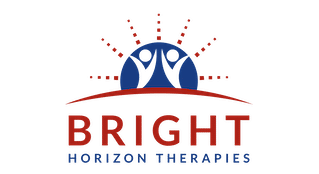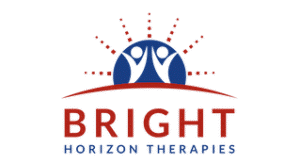Welcome to Trauma Demystified, which was brought to you by Bright Horizon Therapies. I am Natalie Jovanic, your host on this journey. In today’s episode, we’ll dive into EMDR: What to expect.
EMDR is an evidence-based treatment that has shown remarkable effectiveness in addressing PTSD and trauma. Having worked with EMDR for quite some time, I’ve witnessed profound changes in my clients. But it’s important to remember that EMDR isn’t a quick fix—it’s a process that honours each person’s unique experience. So, join me today as we unpack the healing journey with EMDR, exploring both its benefits and limitations. I hope the episode clarifies and explains what to expect with EMDR therapy.
What is EMDR therapy?
First, Let’s look at what EMDR therapy is. EMDR stands for Eye Movement Desensitization and Reprocessing. It is an evidence-based trauma treatment that, like parts work and somatic therapies, takes a bottom-up approach to healing. If you want to learn more, please check out the episode What are best practices for trauma treatment. EMDR helps us recover from the emotional distress of traumatic and painful life experiences such as trauma and loss.
While we often only associate EMDR with memory reprocessing, it is a complete trauma treatment method that follows the stages of trauma recovery: stabilization and safety, reprocessing and mourning, and reconnection. I explored the stages more deeply in the third episode of Trauma Demystified: Thriving after Trauma – Goals for Trauma Recovery. Please check them out if you want to learn more.
During an EMDR session, the client focuses on a painful memory while they follow my fingers with their eyes. The bilateral stimulation is at the core of EMDR. While we do not fully understand it, the process allows clients to integrate traumatic experiences. One theory suggests that these eye movements create a REM-like state that activates the brain’s natural healing capacity. Bilateral stimulation may also serve as an anchor that helps clients process memories without becoming overwhelmed. This is essential for processing trauma.
Although we don’t fully understand how EMDR works, research shows that EMDR is highly effective in treating trauma and PTSD. Major organizations like the World Health Organization and the U.S. Department of Veterans Affairs recommend it.
Who can benefit from EMDR?
This is a question that people ask me quite often when it comes to EMDR – What to expect.
EMDR therapy can benefit anyone who has experienced trauma or loss. For example, I used EMDR to heal from systemic trauma. Before I started this journey, a part of me doubted whether I could heal from experiences because they were overwhelming. I was astonished at how quickly EMDR helped me work through complex emotions stuck in my body. After a couple of sessions, I felt a tremendous relief.
However, EMDR is effective for many other types of experiences. Here are some examples from the work with my clients: Some clients have used EMDR to integrate experiences of sexual abuse or rape. Others have processed the loss of a loved one or the end of a relationship with EMDR. Many clients have also used EMDR to address bullying and childhood abuse. Some clients integrated trauma due to workplace abuse, systemic racism or discrimination. Other clients have used EMDR to heal after abortions or miscarriages. Additionally, EMDR can be used to facilitate healing from accidents, natural disasters, and war trauma. Overall, EMDR provides a powerful tool for transforming these deeply painful experiences.
Recovery process with EMDR: What to expect
Now, let’s look at what to expect when you start EMDR treatment. There are sometimes overly simplified stories about what to expect from EMDR Therapy and the process. Generally, the process has a structure, and the details depend on what has happened to you, the symptoms you experience, and the context of your life in the present.
An individual who has experienced trauma due to a car accident is likely to have a different treatment plan than an adult who has experienced childhood abuse. I’ll give you some ideas about the process and generic steps. Please keep in mind that it needs to be adjusted to your needs. The EMDR therapy process follows similar steps as the process for trauma counselling.
Phase 1: Evaluation
The first phase of EMDR therapy is evaluating the client and their situation. In this phase, I usually explore with my clients their strengths, the bigger context of their lives, their problems, and how they developed. Furthermore, it includes defining long-term and short-term goals for our collaboration. Additionally, we explore possible obstacles preventing them from achieving their goals and how they could navigate them.
In this phase, we also usually assess the client’s capacity to be in their window of tolerance and other symptoms of trauma like dissociation, signs of structural dissociations or flashbacks.
An outcome of the evaluation phase is that I explain the treatment plan to the client, and we agree on it. Please note that treatment plans aren’t written in stone. They need to be reviewed regularly and be adjusted when necessary.
Phase 2: Preparation
The second phase of EMDR treatment is the preparation phase. It is a vital step in trauma recovery and depends on the client’s context and what has happened to them. It may look very different for a person who has trauma due to a car accident or a person who has experienced childhood abuse. Common elements of this phase include increasing safety, stabilizing the nervous system, and building strengths and skills. Here are some ideas on how this might look like:
Skill-building
The most common skill-building tools are grounding and self-soothing tools. These help clients learn to manage intense emotions and prepare for memory reprocessing. I usually work with these tools for all of my clients. Additionally, it includes finding tools to manage anxiety or hyper- and hyperarousal. Furthermore, the client learns to contain painful memories and difficult emotions. If people have experienced childhood abuse or relational trauma, we usually work towards setting healthy boundaries, practicing assertiveness and addressing symptoms of structural dissociations.
Increasing safety
Increasing safety is a vast topic in trauma recovery. It may range from exploring the safety of the client’s current relationships to avoiding harmful or abusive relationships. For example, suppose an individual has experienced childhood abuse and still has contact with the person who abused them. In that case, reducing or avoiding the contact for the healing process can be helpful. Moreover, we may work with parts with behaviours that risk the client’s wellbeing. The goal is to reduce the risk and find healthier coping skills.
Furthermore, it includes practices to increase the client’s sense of safety, like visualizations of safe inner space. Curious about learning more practical tools for healing? Tune into the episode ‘5 Effective Trauma Counselling Techniques‘ for valuable insights.
Strength and resource-building
Resource building is another element of the preparation phase. These include using the EMDR eye movement to increase clients’ inner resources so they can manage current challenges in an empowered way.
Please keep in mind that the length of the Preparation phase varies and depends on the client’s situation. As a rule of thumb, it is likely to last longer if a person has experienced childhood trauma or complex trauma. When we have achieved the goals of the preparation phase and the client feels ready, we move forward into the trauma resolution with EMDR.
Phase 3 Assessment with EMDR – What to expect?
Phase 3 is about assessment. Please note that this term has a different meaning in EMDR therapy than in counselling. In this phase, we decide on the traumatic incident we want to work on. This usually depends on the client’s goals and what has happened to them. When we have agreed on the memory, I usually guide the client to connect with their inner safety resource, a skill they learned in the preparation phase.
Then, I ask them what picture represents the worst part of the experience and what negative belief they have learned about themselves during the traumatic experience. Afterwards, we explore what they would prefer to believe about themselves. Next, we explore how true the positive belief feels and what emotions come up when they think about the memory and the negative belief. Following that, I invite them to scale the intensity of the emotion and where they feel it in the body. At this point, the memory assessment is completed, and we move into the reprocessing.
Phase 4 Reprocessing with EMDR – What will happen?
During the reprocessing in phase 4, I invite my clients to concentrate on the memory and follow my fingers with their eyes. After about 20 to 30 seconds, I stop moving my fingers and ask my clients to take a deep breath. We usually take it together. Then, I ask them what came up, and the client can share what they want. After that, I ask them to go with it, and we repeat the eye movement.
We continue this process following the EMDR protocol until the client has fully integrated the memory and the emotional intensity is zero. The duration of this process is individually different; sometimes, it happens in the first session. However, it ranges between 5 to 12 sessions. If a client doesn’t feel relief after several sessions, we may need to dig deeper to find the root cause. It doesn’t mean that EMDR isn’t working or that the client can’t heal from a traumatic experience. However, some protective parts or beliefs might block further integration, or we have missed out on something in the stabilization phase.
Phase 5: Installation
After the client has reprocessed the memory, we install the positive belief. This is phase 5 of the EMDR process. This means the client concentrates on the positive belief and the target memory until they feel in their body that the positive belief is fully valid.
Phase 6: Body Scan
The last step of trauma resolution is for the client to concentrate on the memory and positive belief and check their bodies for tension or discomfort. This step is phase 6 and is called a body scan. If there is, we then use eye movements to resolve it.
Phase 7: Closure
Phase 7 is about closure. Closure varies depending on the phase the client is in. Every session with reprocessing has a closure. The phase supports the client in returning to a calm state and reconnecting with the present moment. For example, if the client is in the reprocessing phase, I usually invite them to put the memory into an imaginary container, and we debrief the session. A memory is fully reprocessed if the emotional intensity of the memory is at zero, the positive belief feels entirely true, and the body scan is clear.
Phase 8: Re-evaluation.
Phase 8 is re-evaluation. Similar to closure, it is a regular element of each session. Re-evaluation happens at the beginning of each session to explore what happened after the last reprocessing session. Furthermore, it’s about making necessary adjustments to the treatment plan and improving the client’s daily functioning. If the memory is fully reprocessed, it includes evaluating if it is still fully processed and exploring the next steps.
After the trauma is resolved, trauma counselling enters the final stage of reconnection. This can include re-assessing the client’s skills, making any necessary adjustments, or preparing the client to cope with challenging situations in future.
EMDR: What to expect – A taste of EMDR
Before I explore some common misconceptions about EMDR, I want to give you a simple experience of how eye movements might feel since they are the core of the EMDR treatment process. In a client session, I typically guide the eye movements with my fingers or through sound. I’ll use sound to simulate this process today since we’re on a podcast.
Please ensure you’re in a safe and quiet space, not driving or doing anything that requires your attention so that you can focus on the exercise. It just will take a brief moment,
Now, I invite you to picture your favourite ice cream in front of you—whether you prefer it in a cone or a cup—and imagine it as well as possible. Hold that image in your mind. As you focus on your ice cream, I’m going to ask you to move your eyes from left to right each time you hear the sound.
[Audio file contains sounds for the eye movements]
Now, take a moment to notice what happens in your body. It might have felt strange initially, but most people quickly get used to eye movements. This was just a tiny taste of how EMDR works in practice. How was it for you?
EMDR: What to expect – Common misconceptions
After this brief experiment, I want to address some common misconceptions about EMDR.
Misconception: EMDR is a magic cure or a quick fix
Sometimes, clients come to me after a doctor tells them that EMDR will provide a quick fix for their healing journey. This can be a double-edged sword, as it reflects a misunderstanding of the trauma treatment process.
While EMDR is highly efficient in releasing the impact of trauma, it is not an instant solution. Keep in mind that most research focuses on the eye movement aspect of EMDR, which occurs in stage two of trauma recovery. For instance, studies show that 83-90% of individuals no longer meet the criteria for PTSD after four to seven sessions (Lee, Gavriel, Drummond, Richards, & Greenwald, 2002; Rothbaum, 1997). In my experience, most clients notice significant symptom relief within five to twelve EMDR sessions. However, this doesn’t include the preparation phase, which looks different for everyone.
Preparation, stage one of trauma recovery, varies depending on the client’s history and symptoms. For example, someone who has experienced childhood abuse, neglect, complex trauma or attachment wounds usually needs a more extended preparation phase than someone dealing with a single event of trauma as an adult. Therefore, we need to be mindful that there isn’t one approach that works for everyone. Each person has a unique recovery journey. As with any trauma treatment modality, EMDR needs to respect what is going on for the client. If you perceive your preparation phase as “longer,” remember that the preparation phase is as important for trauma recovery as memory reprocessing. It’s not a competition, and both phases are equally valid.
In conclusion, while EMDR is an efficient trauma treatment, it’s not a quick fix. Recovery times vary based on the individual, their circumstances, and the severity of their symptoms.
Misconception: EMDR is dangerous and will make symptoms worse
This is a complex topic, so let’s explore it more to understand the risks better. Generally speaking, EMDR is one of the most effective methods for resolving trauma. However, specific nuances are essential to keep in mind: When done correctly, EMDR therapy facilitates reprocessing of traumatic memories as safely as possible. This doesn’t mean that the client doesn’t feel emotions. There is usually a sense of discomfort, and intense emotions may come up. However, clients go into reprocessing after going through the preparation phase. Therefore, they should be equipped to manage difficult emotions and have tools for self-soothing and grounding. If this isn’t the case, these skills need to be further developed.
If a client loses dual awareness during reprocessing (losing the ability to stay grounded in the present while processing past trauma), I, as the trauma counsellor, pause the bilateral stimulation and shift focus to grounding exercises. Throughout reprocessing, I collaborate with my clients to monitor their dual awareness and ensure they remain within their window of tolerance. Pacing matters during the reprocessing phase.
While there is always some risk of retraumatization with unresolved trauma, this is not the same as being outside the window of tolerance or having a trauma response. Retraumatization is more likely in everyday life than during EMDR sessions. That said, a small risk exists, and we take specific steps to mitigate this during EMDR therapy. These include paying attention to the pacing of the process and working gradually through traumatic experiences. For example, some clients prefer EMDR for 10 minutes per session instead of 60 minutes. This is perfectly fine.
For clients with complex trauma, EMDR often requires an iterative process between reprocessing and stabilization. Pacing becomes especially important if we have experienced complex trauma. Generally, the preparation phase takes longer to ensure the client is ready for EMDR. If someone notices their symptoms worsening during the reprocessing stage, I explore this with my clients, and we decide on the next step. This can include building more resources or using parts work therapy.
While EMDR is not inherently dangerous, proper preparation and observation during the process are crucial to ensuring its safety and effectiveness. This can sometimes be a learning process for the client and the therapist.
Misconception: I will have to talk about every detail of my trauma.
A common misconception about trauma therapy is that clients need to share every detail of their traumatic experiences. However, with EMDR, this isn’t the case. One of the advantages of EMDR is that clients can process trauma without having to disclose everything. For example, when working with a new client, I create a “worst things list. For this, I only need a label and the age at which the event occurred—no details are necessary. This allows clients to contain their experiences.
During memory reprocessing with EMDR, we take breaks between each set, and clients can decide how much they want to share. Some feel comfortable discussing their experience in more detail, while others may focus on a body sensation or share a brief sentence about what came up. I have never had a client who did not share anything, but that would be okay. In this way, EMDR gives the power back to the client, and they can choose the level of privacy they need.
Memory reprocessing session with EMDR: What to expect?
So, what should you expect during an EMDR session focused on memory reprocessing? As I stated before, clients typically go through a preparation phase to build their emotional resilience before working with the memories. If you don’t feel prepared enough, it matters to explore this with your mental health professional. It’s important to remember that while reprocessing can feel uncomfortable, discomfort doesn’t mean we’re unsafe.
Before starting memory reprocessing, I like to explore with my clients how they feel about revisiting traumatic or painful experiences and whether all parts of them are ready and give consent. Some parts of us might feel scared to revisit these memories or doubt that healing is possible—this is entirely natural. I usually introduce clients to parts work in the preparation phase, so please check out episode six about parts work therapy to learn more about it. Taking the time to acknowledge and address these concerns is a vital part of the process.
An EMDR session usually lasts around 60 minutes, though some clients prefer shorter EMDR segments, like 20 minutes, followed by other therapeutic work for the remainder of the session. As your counsellor, I guide you through this process safely and at a pace that feels right for you. If you reach the edge of your window of tolerance—when things start to feel overwhelming—we can slow down or do a grounding exercise to help you regain balance.
Benefits of EMDR treatment
The benefits of EMDR vary for each individual, so here’s an idea of what they can look like:
When I used EMDR to heal from systemic trauma, I experienced a profound shift as painful emotions were released from my body. I felt more joy and excitement and gained a sense of empowerment to face systemic oppression. This allowed me to nurture post-traumatic growth that went beyond who I was before the trauma.
Here are some examples from my clients: One client shared that after completing EMDR, they remained calm and confident when they unexpectedly encountered a workplace bully. Another client reported feeling calm and empowered, and recurring thoughts about past sexual abuse had disappeared.
Now let’s look at the general benefits of EMDR and what to expect when it comes to outcomes:
Effective symptom relief
EMDR often resolves symptoms faster and more efficiently than traditional talk therapy; as I mentioned in a previous episode, traditional talk therapy hasn’t proven efficient in healing trauma. Additionally, EMDR offers a focused approach that ensures safety while processing traumatic memories.
Comprehensive treatment
EMDR is a comprehensive treatment that addresses all stages of trauma recovery. The preparation phase is a vital element of EMDR. Depending on what has happened to the individual, it helps clients develop emotional regulation skills, set healthy boundaries, and build resilience and healthier relationships.
Deep emotional and psychological healing
EMDR facilitates deep emotional and psychological healing by allowing individuals to process and release the emotions tied to their trauma. Therefore, it goes beyond relieving symptoms. While we can’t change the past, EMDR helps free us from emotional pain and burdens.
Long-term empowerment
EMDR offers long-lasting relief from trauma, and the skills developed during the preparation phase promote resilience and self-regulation. As a result, clients feel empowered in their everyday lives and learn to manage challenges healthily.
Post-traumatic growth
Post-traumatic growth is the positive transformation that can occur after trauma, going beyond simple recovery. EMDR has been shown to foster this growth, enhancing emotional and physical well-being, even if it wasn’t the primary focus of the treatment.
Why choose EMDR?
EMDR therapy can be transformative for people who have experienced trauma and loss. From my experience as a client and therapist, I’ve seen firsthand how powerful EMDR can be. However, finding a practitioner who tailors the treatment to your specific needs is crucial, as EMDR is most effective when adapted to your unique situation. Not all professionals have the same training or experience, so finding someone who understands your context is vital.
I offer EMDR because I deeply believe in its effectiveness for healing trauma, but I also integrate other approaches to provide a more personalized experience. No approach fits every person. Sometimes, clients need to experiment with different methods to find those that work for them. Sometimes, clients have done a lot of healing before they successfully integrate trauma with EMDR. Trusting your gut and what feels right to you is important—if EMDR doesn’t resonate, it doesn’t mean there’s something wrong with you. Healing is a personal journey; not every therapist or approach will fit. Always listen to yourself when choosing the path that feels right for you.
Take Away – EMDR What to expect
In this episode, we explore how EMDR can be a transformative tool for trauma recovery, helping individuals safely process and heal from deep emotional wounds. We also highlight the importance of combining EMDR with approaches like parts work and tailoring healing to each person’s unique needs. The main takeaway is to trust your intuition when seeking support and work with professionals who foster a safe, empowering space. It’s essential to respect your pacing rather than rushing into memory processing.
Thank you for joining us on this episode EMDR What to expect! Remember, healing is deeply personal, and finding what feels right for you is vital. Trust yourself, seek support from those who prioritize your safety and are transparent about their approach, and take your time as you progress on your recovery path. If you want to hear more from us, please subscribe to Trauma Demystified. If you have any questions, please send me a message at nat@brighthorizontherapies.com. Talk to you soon!
Wondering how much EMDR therapy costs? Check out the blog post ‘EMDR: How Much Does It Cost?’ for valuable insight.
Sources
Greenwald, R. (2020). EMDR basic training, approved by the EMDR International Association (EMDRIA). [Online course]. Trauma Institute & Child Trauma Institute
Davis, E., & Marchand, J. (2021). Attachment and dissociation assessment and treatment. [Online course]. R. Cassidey Seminars




